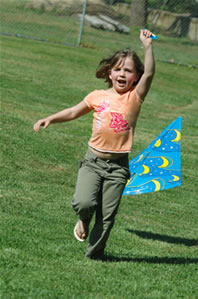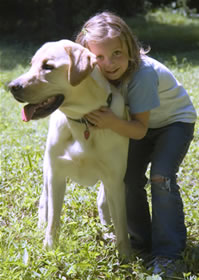Playing Outside the Box
 The building that had once been a sprawling grocery store was now a brightly-colored entertainment megaplex called “the Children’s Fun Palace”. The parking lot was filled with cars. None of us knew what to expect on this first visit, but it was obviously the place to be on a warm, April day in the Midwestern town where my daughter lives.
The building that had once been a sprawling grocery store was now a brightly-colored entertainment megaplex called “the Children’s Fun Palace”. The parking lot was filled with cars. None of us knew what to expect on this first visit, but it was obviously the place to be on a warm, April day in the Midwestern town where my daughter lives.
Inside, neon flashed and blinked. Bells and buzzers and stereo sirens blared. Toddlers in diapers wailed and their older brothers and sisters whined for more quarters. I wanted to turn and run, but we had come so our five year old grand daughter could play. And thank God, she would have none of it.
She became fretful and anxious after just a few minutes in the flood of noise and light, overwhelmed by the clash of careening video race cars and raygun-wielding aliens. Our daughter Holli, Abby’s mom, was apologetic. Other moms had told her about their visits to this place as a good way to spend a few hot afternoon hours with their kids. Holli knew that her parents just come from their quiet valley in Floyd County were stunned by the frenzy and rush of the Fun Palace, and that they wanted something far different than this for their only grand daughter’s ideas about play. So we went to a park a half mile away. And the parking lot there was empty.
Within five minutes at the park, Abby had found the broken remnants of a tail-less kite and her frolic with that free toy entertained us all for an hour that none of us will forget. What a striking contrast we witnessed that afternoon between the old-fashioned play of children actively entertaining their bodies and imaginations outdoors, and the modern, over-stimulating diversion that happens passively to kids almost exclusively inside and which may offer exercise for little more than the muscles of thumb and one or two fingers.
“I like to play indoors better ’cause that’s where all the electrical outlets are” explained one urban fifth grader I read about recently, a sign of our times. And I wondered: do we finally stand completely apart from nature? Have we lived past the days of free-range children at play?
Ask just about anyone over fifty if being outdoors was important in their growing-up, and they’ll tell of summer swimming holes and hide-and-seek in the woods. Fondly, they will remember winter skating on the pond behind the barn and building forts and catching crawdads in the creek. They couldn’t imagine a childhood in which they hadn’t entertained themselves for hours in unstructured make-believe in the outdoors. I know that, when I was being punished, I was restricted to my room indoors, where these days, so many children spend so much time by choice.
In his book, Last Child in the Wood, journalist and author, Richard Louv, calls this condition “nature deficit disorder”. He describes the costs of our de-natured existence and also offers encouragement that we can do better for our children. The “Leave No Child Inside” campaign that has come from his work is just one possible path to give back to children the sounds, sensations and sensibilities that are lacking when they are not participants in the rhythms and cycles of the natural world.
But then, in our small corner of the globe, the task of immersion in nature is not that hard. And when Abby visits Granny and Dumpa on Goose Creek, they just give her a bucket, a little minnow net, a big yellow dog, and an afternoon outside. The rest, she makes up as she loses herself in play.

